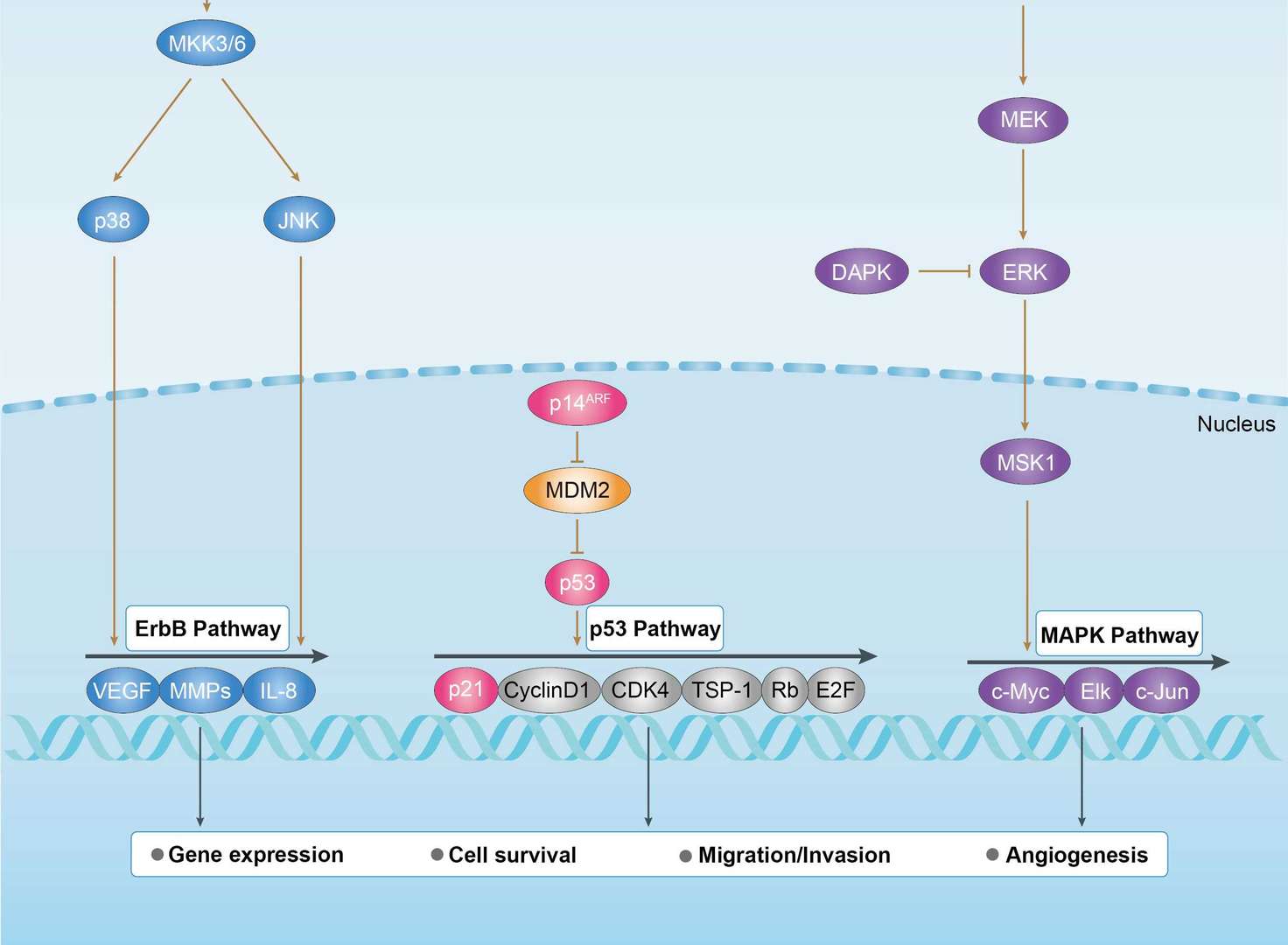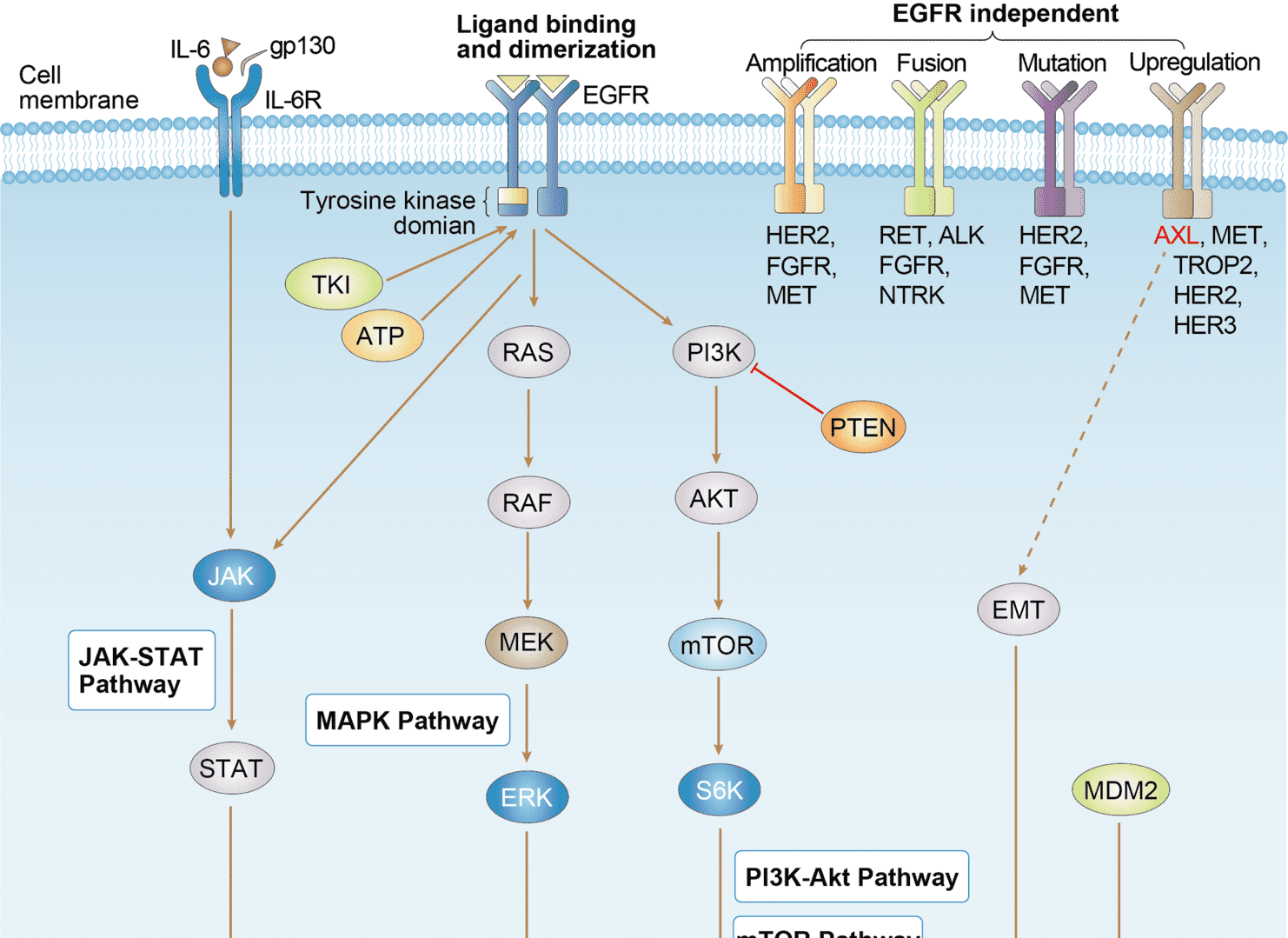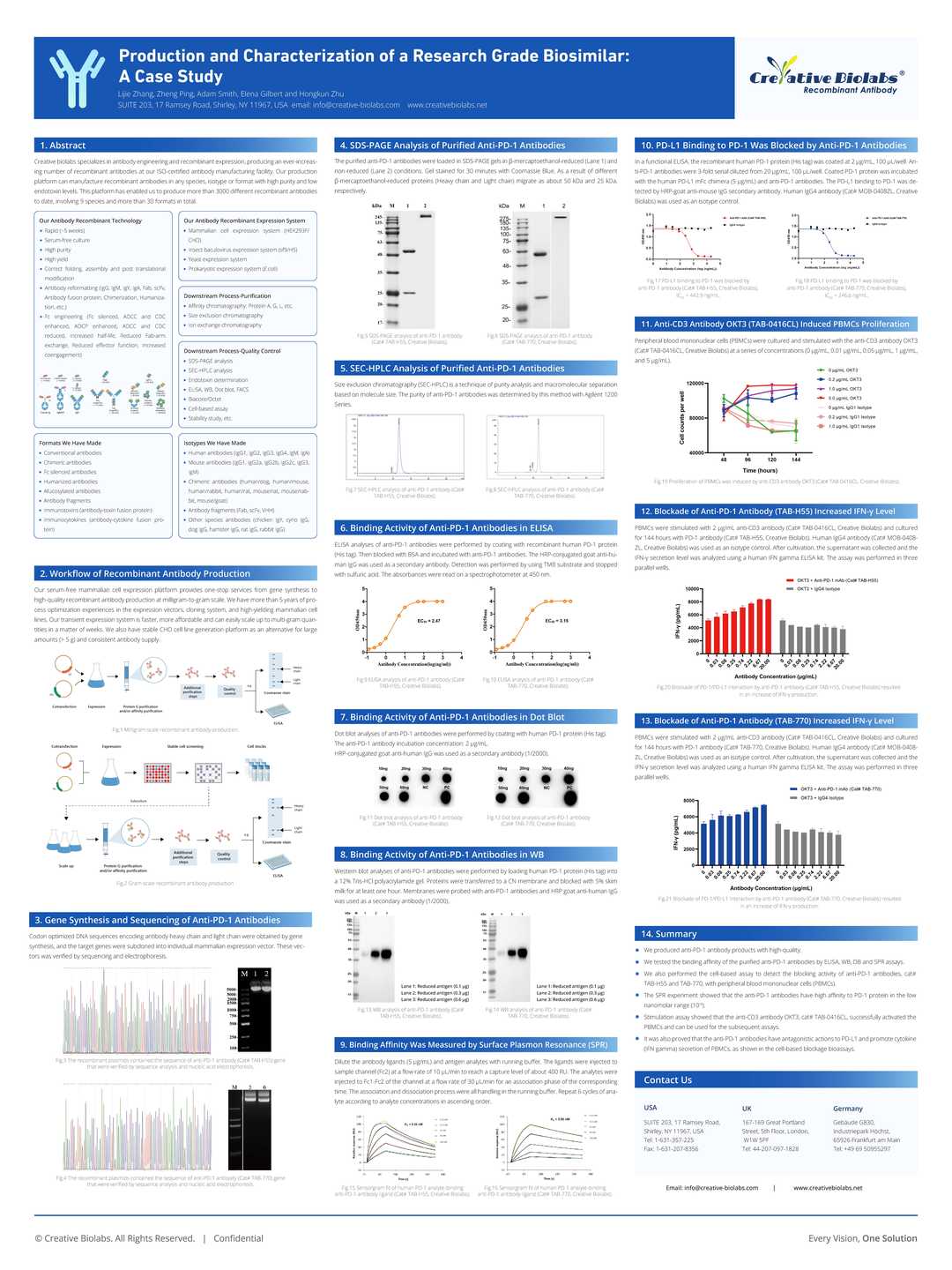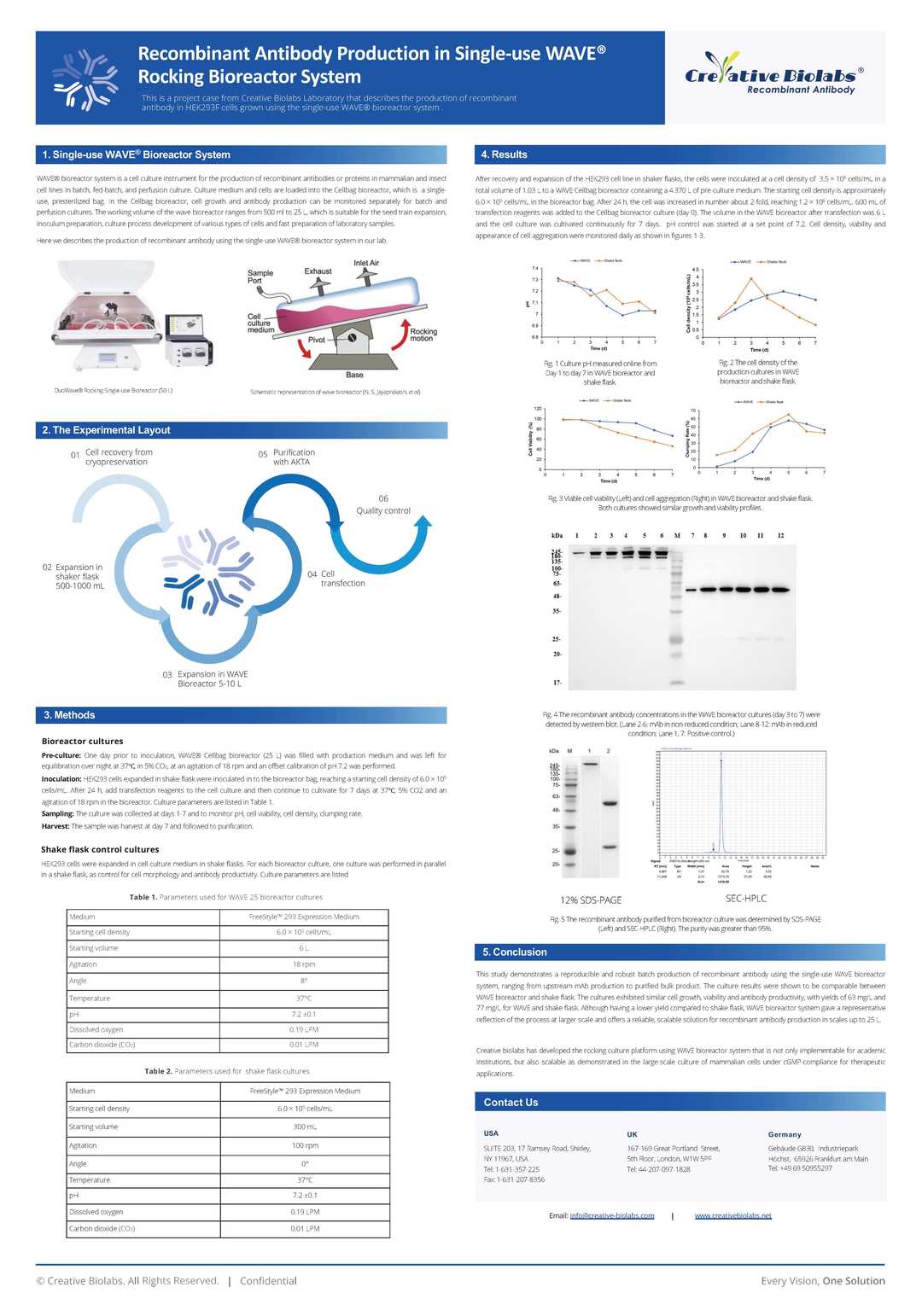Human Anti-FGFR3 Recombinant Antibody (clone PRO-001)
CAT#: HPAB-0160-YC
Provided is one FGFR3 inhibitor, an antibody. The antibody has a specific affinity for fibroblast growth factor receptor 3 (FGFR3).













Specifications
- Host Species
- Human
- Derivation
- Combinatorial antibody library
- Type
- Human IgG
- Specificity
- Human FGFR3
- Species Reactivity
- Human, Mouse
- Clone
- PRO-001
- Applications
- FC, FuncS
- Related Disease
- Inflammatory autoimmune disease, Rheumatoid arthritis
Product Property
- Purity
- >95% as determined by SDS-PAGE and HPLC analysis
- Concentration
- Please refer to the vial label for the specific concentration.
- Buffer
- PBS
- Preservative
- No preservatives
- Storage
- Centrifuge briefly prior to opening vial. Store at +4°C short term (1-2 weeks). Aliquot and store at -20°C long term. Avoid repeated freeze/thaw cycles.
Applications
- Application Notes
- The antibody was validated for Flow Cytometry, Inhibition. For details, refer to Published Data.
Target
- Alternative Names
- Fibroblast Growth Factor Receptor 3; EC 2.7.10.1; FGFR-3; JTK4; Fibroblast Growth Factor Receptor 3 Variant 4; Achondroplasia, Thanatophoric Dwarfism; Hydroxyaryl-Protein Kinase; Tyrosine Kinase JTK4; CD333 Antigen; HSFGFR3EX; EC 2.7.10; CD333; CEK2; ACH
- Gene ID
- 2261
- UniProt ID
- P22607
Customer Review
There are currently no Customer reviews or questions for HPAB-0160-YC. Click the button above to contact us or submit your feedback about this product.



Q&As
-
How can I keep my antibodies from degrading while they're being stored?
A: Keep out of direct sunlight, store under specified conditions, and reduce freeze-thaw cycles. The antibody can also be stabilized by adding glycerol.
-
What could be causing my tests' faint signal?
A: Weak signals in experiments may be the result of inadequate blocking, low-quality material, or insufficient antibody concentration.
-
Can I utilize automated staining methods with this antibody?
A: Absolutely, make sure the antibody is compatible with the particular automated system and validate your methodology appropriately.
View the frequently asked questions answered by Creative Biolabs Support.
Cite This Product
To accurately reference this product in your publication, please use the following citation information:
(Creative Biolabs Cat# HPAB-0160-YC, RRID: AB_3111362)
Submit Your Publication
Published with our product? Submit your paper and receive a 10% discount on your next order! Share your research to earn exclusive rewards.
Related Diseases
Downloadable Resources
Download resources about recombinant antibody development and antibody engineering to boost your research.
Product Notes
This is a product of Creative Biolabs' Hi-Affi™ recombinant antibody portfolio, which has several benefits including:
• Increased sensitivity
• Confirmed specificity
• High repeatability
• Excellent batch-to-batch consistency
• Sustainable supply
• Animal-free production
See more details about Hi-Affi™ recombinant antibody benefits.
Datasheet
MSDS
COA
Certificate of Analysis LookupTo download a Certificate of Analysis, please enter a lot number in the search box below. Note: Certificate of Analysis not available for kit components.
See other products for "Clone PRO-001"
- CAT
- Product Name
See other products for "FGFR3"
Select a product category from the dropdown menu below to view related products.
| CAT | Product Name | Application | Type |
|---|---|---|---|
| AGTO-G028E | Anti-FGFR3 immunotoxin (scFv)-PE | Cytotoxicity assay, Function study | |
| AGTO-G028G | Anti-FGFR3 immunotoxin (scFv)-Gel | Cytotoxicity assay, Function study | |
| AGTO-L016E | aFGF-PE immunotoxin | Cytotoxicity assay, Functional assay | |
| AGTO-L016G | aFGF-Gel immunotoxin | Cytotoxicity assay, Functional assay |
| CAT | Product Name | Application | Type |
|---|---|---|---|
| PABL-095 | Human Anti-FGFR3 Recombinant Antibody (clone 2B.1.3) | ELISA, WB, IF, FuncS | Human IgG |
| MOB-0738CT | Recombinant Mouse anti-Human FGFR3 Monoclonal antibody (NN0380-7H22) | IHC-P, WB | |
| HPAB-0157-YC | Human Anti-FGFR3 Recombinant Antibody (HPAB-0157-YC) | ELISA, IP, WB | Human IgG |
| HPAB-0158-YC | Mouse Anti-FGFR3 Recombinant Antibody (HPAB-0158-YC) | ELISA, FC | Mouse IgG |
| HPAB-0159-YC | Human Anti-FGFR3 Recombinant Antibody (clone Antibody 1) | ELISA, FuncS | Human IgG |
| CAT | Product Name | Application | Type |
|---|---|---|---|
| PFBL-471 | Human Anti-FGFR3 Recombinant Antibody (clone R3Mab); Fab Fragment | ELISA | Human Fab |
| HPAB-0157-YC-F(E) | Human Anti-FGFR3 Recombinant Antibody; Fab Fragment (HPAB-0157-YC-F(E)) | ELISA, IP, WB | Human Fab |
| HPAB-0158-YC-F(E) | Mouse Anti-FGFR3 Recombinant Antibody; Fab Fragment (HPAB-0158-YC-F(E)) | ELISA, FC | Mouse Fab |
| HPAB-0159-YC-F(E) | Human Anti-FGFR3 Recombinant Antibody (clone Antibody 1); Fab Fragment | ELISA, FuncS | Human Fab |
| HPAB-0160-YC-F(E) | Human Anti-FGFR3 Recombinant Antibody (clone PRO-001); Fab Fragment | FC, FuncS | Human Fab |
| CAT | Product Name | Application | Type |
|---|---|---|---|
| PFBW-162 | Human Anti-FGFR3 Recombinant Antibody (clone R3); Fab Fragment | Neut, ELISA, FC | Human Fab |
| PSBL-471 | Human Anti-FGFR3 Recombinant Antibody (clone R3Mab); scFv Fragment | ELISA | Human scFv |
| HPAB-AP654-YC-S(P) | Human Anti-FGFR3 Recombinant Antibody; scFv Fragment (HPAB-AP654-YC-S(P)) | ELISA, Inhib, FuncS | Human scFv |
| HPAB-AP655-YC-S(P) | Human Anti-FGFR3 Recombinant Antibody; scFv Fragment (HPAB-AP655-YC-S(P)) | ELISA, Inhib, FuncS | Human scFv |
| HPAB-AP656-YC-S(P) | Human Anti-FGFR3 Recombinant Antibody; scFv Fragment (HPAB-AP656-YC-S(P)) | ELISA, Inhib, FuncS | Human scFv |
| CAT | Product Name | Application | Type |
|---|---|---|---|
| TAB-062WM | Mouse Anti-FGFR3 Recombinant Antibody (TAB-062WM) | ELISA, FC, Neut, WB | Mouse IgG |
| TAB-063WM | Mouse Anti-FGFR3 Recombinant Antibody (TAB-063WM) | ELISA, FC, Neut, WB | Mouse IgG |
| TAB-062WM-F(E) | Mouse Anti-FGFR3 Recombinant Antibody; Fab Fragment (TAB-062WM-F(E)) | ELISA, FC, Neut, WB | Mouse Fab |
| TAB-063WM-F(E) | Mouse Anti-FGFR3 Recombinant Antibody; Fab Fragment (TAB-063WM-F(E)) | ELISA, FC, Neut, WB | Mouse Fab |
| TAB-064WM-F(E) | Anti-Human FGFR3 Recombinant Antibody Fab Fragment (15D8) | Neut, ELISA |
| CAT | Product Name | Application | Type |
|---|---|---|---|
| NEUT-834CQ | Mouse Anti-FGFR3 Recombinant Antibody (clone CBL546) | Neut | Mouse IgG1 |
| NEUT-835CQ | Mouse Anti-FGFR3 Recombinant Antibody (clone CBL547) | WB, Neut | Mouse IgG1 |
| NEUT-836CQ | Mouse Anti-FGFR3 Recombinant Antibody (clone 6G11) | WB, Neut | Mouse IgG1 |
| NEUT-837CQ | Mouse Anti-FGFR3 Recombinant Antibody (clone CBL061) | WB, IHC, Neut | Mouse IgG1 |
| NEUT-838CQ | Rat Anti-Fgfr3 Recombinant Antibody (clone CBL548) | Neut | Rat IgG2a |
| CAT | Product Name | Application | Type |
|---|---|---|---|
| MOR-1299 | Hi-Affi™ Rabbit Anti-FGFR3 Recombinant Antibody (clone DS1299AB) | WB, IHC, ICC, FC | Rabbit IgG |
| CAT | Product Name | Application | Type |
|---|---|---|---|
| VS-0325-XY838 | Anti-FGFR3 Immunohistochemistry Kit | IHC | |
| VS-0525-XY2544 | Anti-Mouse FGFR3 Immunohistochemistry Kit | IHC | |
| VS-0525-XY2543 | Anti-Human FGFR3 Immunohistochemistry Kit | IHC |
| CAT | Product Name | Application | Type |
|---|---|---|---|
| VS-0425-YC387 | Recombinant Anti-FGFR3 Vesicular Antibody, EV Displayed (VS-0425-YC387) | ELISA, FC, Neut, Cell-uptake |
| CAT | Product Name | Application | Type |
|---|---|---|---|
| VS-0525-YC82 | Recombinant Anti-FGFR3 (Domain 2 x Domain 3c) Biparatopic Antibody, Tandem scFv (Clone PRO-001 x Clone PRO-055) | FC | Tandem scFv |
Popular Products

Application: ELISA, IP, FC, FuncS, Neut, IF, ICC

Application: FuncS, IF, Neut, ELISA, FC, IP, IHC

Application: FC, IP, ELISA, Neut, FuncS, IF, ICC

Application: FC, IP, ELISA, Neut, FuncS, IF, WB

Application: Neut, ELISA, IF, IP, FuncS, FC, ICC

Application: FuncS, IF, Neut, ELISA, FC, IP, ICC

Application: ELISA, WB, BLI, SPR

Application: ELISA, SPR, Inhib, FuncS

Application: WB, IF, FuncS

Application: WB, ELISA, FC, IHC, IP
-2.png)
Application: WB, ELISA

Application: FC, FRET, Internalization

Application: ELISA, IHC, FC, IP, IF, Inhib

Application: ELISA, FuncS
For research use only. Not intended for any clinical use. No products from Creative Biolabs may be resold, modified for resale or used to manufacture commercial products without prior written approval from Creative Biolabs.
This site is protected by reCAPTCHA and the Google Privacy Policy and Terms of Service apply.
















 Bladder Cancer
Bladder Cancer
 EGFR Tyrosine Kinase Inhibitor Resistance
EGFR Tyrosine Kinase Inhibitor Resistance










